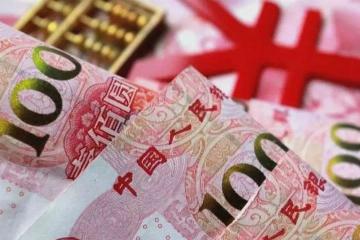Surge in Trading! All Breakthroughs Exceed 100%
Advertisements
In a notable turn of events, the market observed a substantial surge in reverse repo rates, setting a jubilant mood ahead of the festive seasonOn January 17, trading saw the short-term reverse repo rates—GC001, GC002, and GC003—soar with all figures eclipsing a 100% increase during trading hoursMost striking was GC001, which experienced a maximum rise of 156.03%. However, this exhilarating uptick diminished by the closing, leading to an eventual increase of 42.78%, 35.08%, and 24.91% for GC001, GC002, and GC003 respectively, ending at rates of 3.955%, 3.6%, and 3.335%.
This situation aligns well with the central bank's strategy of using significant reverse repos to facilitate liquidity as the New Year approaches
Advertisements
On the same day, the People’s Bank of China announced a massive open market operation involving a fixed-rate reverse repo worth 105 billion yuan with a seven-day maturity, retaining the interest rate at 1.5%, consistent with previous levelsAlso, with 4.5 billion yuan worth of seven-day reverse repos maturing on that day, the net injection of funds into the market amounted to 100.5 billion yuan.
In recent developments, the central bank has employed extensive measures throughout the week, including a rollback of 340.5 billion yuan in reverse repo operations on January 16 aloneThe preceding day already saw a staggering 958.4 billion yuan offered, totaling a notable liquidity investment of 1.35 trillion yuan into the market over three days.
The Chief Macroeconomic Analyst at Dongfang Jincheng, Wang Qing, remarked that the central bank's ongoing, large-scale reverse repos have become a response strategy against the expiration of 995 billion yuan in Medium-term Lending Facility (MLF) on January 15, alongside factors like tax-related withdrawals and a customary increase in cash demands leading up to the Spring Festival
Advertisements
With current money market rates such as DR007 hovering at relatively high levels, it seems plausible that the central bank may further utilize reverse repos in the short term to inject liquidity into the market.
This month is particularly heavy on tax payments and, paired with the approaching Spring Festival, there has been a marked increase in cash withdrawal demands by the populace, which presents unprecedented liquidity challengesHistorically, during the lead-up to the Spring Festival, substantial strains on market liquidity are not uncommon.
Recent data illustrates a significant uptick in the Shanghai Interbank Offered Rate (SHIBOR), with the seven-day and 14-day rates surging beyond 2%, the latter climbing to 2.656%. These figures signify tighter financial conditions in the marketplace.
Despite the noteworthy net injections exceeding 1 trillion yuan by the central bank over the preceding days, and with the Spring Festival approaching, Wang Qing cautioned that the tightened liquidity scenario may persist for some time.
Hu Bo, a fund manager at Rongzhi Investment, noted that the surge in reverse repo rates is primarily attributed to the approaching festival, resulting in a relatively constrained capital market
Advertisements
Financial institutions, particularly banks, generally initiate fund recuperation strategies prior to the Spring Festival, indirectly affecting overall market liquidity and leading to rate escalations for interbank loans, akin to behaviors noted at the end of quarters.
It is crucial to emphasize that although slight tightening is evident at year-end, an overall ample liquidity environment remainsFollowing the central bank's sustained net injections into open markets, interbank collateralized borrowing rates for overnight deposits (DR001) have exhibited a declineThe current weighted average rates stand at 1.8651% for DR001 and 2.1252% for DR007, showing significant improvement compared to previous years.
Looking ahead, the overarching tone for the fiscal year is likely to remain accommodating
- Oil Prices Plunge!
- Why Raising Interest Rates Can't Curb Inflation in the U.S.
- Signs of a Collapse in U.S. Treasury Bonds
- Flash Crash of UK Government Bonds
- China-U.S. Treasury Yield Differential Holds Steady
The People's Bank of China's working meeting on January 4, 2025, outlined priorities such as "timing reductions in reserve requirements and interest rates" and ensuring "plentiful liquidity, steady growth in financial metrics aligning with economic growth, and maintaining the stability of the RMB exchange rate on an appropriate benchmark." On January 15, the central bank faced the maturity of 995 billion yuan in MLF yet opted for a 7-day reverse repo of 959.5 billion yuan rather than adjusting reserve requirementsCiting one principal reason, an analyst from Bank of China Securities, Zhang Xiaojiao, mentioned that a cut might exert pressure on the RMB exchange rate due to a consistently strong US dollar index.
Analysts suggest careful observation of two significant events in the short term: the shift in US economic policy following the presidential inauguration on January 20 and the Federal Reserve's subsequent meeting on January 30 regarding potential interest rate pauses

Domestically, focus should center on consumer spending surges during the Spring Festival and following the holiday, whether corporate production schedules and financing demands show signs of sustainable recovery.
As for investment strategies slated for 2025, Huang Jianbin, Chief Asset Allocation Officer at Bosera Asset Management, remarked since the targeted incremental policy efforts enforced post the meeting on September 26, 2024, optimism surrounding social economic confidence has steadily risen, bolstering capital market dynamism and investor sentimentThe underlying strength and resilience of the Chinese economy remains, coupled with the gradual recovery of corporate earnings and market confidence, suggesting that overall opportunities may outweigh risks within the equity market.
This year is likely to unveil structural opportunities centered on boosting economic stabilization and promoting high-level self-sufficiency